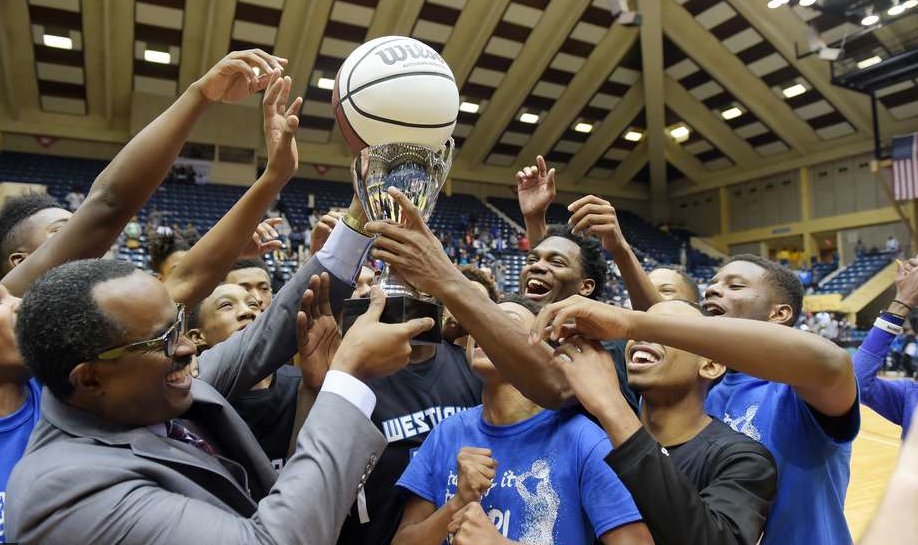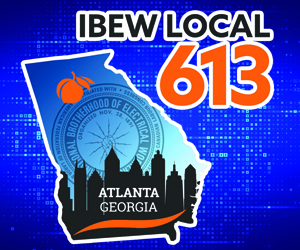
Craig Sager II was born and raised in Atlanta and has grown up in the world of sports. He earned his degree at Grady College of Journalism and Mass Communication at the University of Georgia, where he also walked on the football team for three seasons (2008-10). Craig has worked for Score Atlanta since 2012 and has performed the duties of managing editor since the 2014 high school football season.
The Georgia High School Association, the governing body of our state’s athletics and activities, indefensibly marred the 2016 basketball state championships by failing to provide a correctly measured regulation court at the 48-year-old host Macon Centreplex this weekend. I have evidenced that the court’s baskets were also positioned a foot further back than a regulation court in 2015, meaning that free throws were 16 feet rather than 15 feet then and that 50 square feet of baseline behind and under the basket was reduced on each side of the court amongst the other disproportions. To an informed individual, the influence these metric differences would have on a game or on any given play are clear, which is why the statement sent out by the GHSA as the Marietta Daily Journal broke the story was perhaps the biggest misstep of the weekend.
Reading the statement, it becomes clear that the GHSA severely underestimated the immediate and national attention they would entice.
“Only one coach even mentioned a possible problem, and my basketball staff watched the games closely and did not notice any appreciable effect on the shooting or the play of any of the teams,” said GHSA Executive Director Gary Phillips in his statement. “Some of the teams even shot extremely well from both the floor and the free throw line. But, overall, it looked like typical championship play.”
First of all, one coach bringing light to the problem is all it should have taken. Once the wrongly measured court had been detected, the reality of the situation becomes absolute. The court’s measurements were wrong and that could not be disputed. Whether one coach noticed, or the entire state ‘noticed’, should have never made a difference to our state’s governing sentinels of sportsmanship and integrity. Second of all, I don’t even need a second of all.
I could break down the entire statement and counsel the GHSA on every mistake made this weekend, but I genuinely believe that a valuable lesson has been learned. I believe that this unfortunate situation and unsettling wakeup call wheeled in a new chapter. The GHSA received its tutorial on how powerful social media is as the gaffe reached the national media and delivered more support to the ripening frustrations shared by those already engaged with the story. With social media, the demand for accountability grew epidemically, while the GHSA’s original statement was fatefully anchored by an unconcerned denial of the problem.
I have pointed out the ethical reasons why I believe this will not happen again, but there are other changes on the horizon that will restructure the Georgia high school landscape permanently that I want to focus on. In the light of the Macon fiasco, the GHSA will have more pressure than ever this upcoming school year as they marshal in extensive changes. The 2016-18 Region Alignment that was set in stone this January is the most significant reclassification made in the state’s history. The addition of Class 7A restructures the regions and teams in each classification, and also increases the amount of teams that make the playoffs and that will appear in the subsequently expanded championship schedules. Nowhere will the changes be more impactful than basketball, where instead of 15 state championship games (14 plus the AAASP Wheelchair game), it will increase to a 17-game championship weekend. If the additional games do force a change to the locations of state championships in upcoming years, the other rounds are still impacted by the new alignment, which is exactly my next point. This year was the first time that the basketball quarterfinals and semifinals were held at seven separate locations on the same weekend. If this same format continues, the GHSA will have to introduce an eighth location to host its own dozen games. As for football, the eight-game championship lineup will change our four-year run of crowning seven state champs. But most importantly, the restructuring into a seventh classification and keeping the divided Class A-Private and Class A-Public championships creates 62 additional playoff basketball games this next year alone. The 62 new basketball games is in addition to the hundreds of new playoff games football and the other 17 GHSA sanctioned sports will add this next school year and in the years to follow. So, with 14.3 percent more playoff games on the hardwood next year, that should create more than enough revenue for the GHSA to assure us all that this lesson’s been learned. So, see you next year. We can’t wait.














































